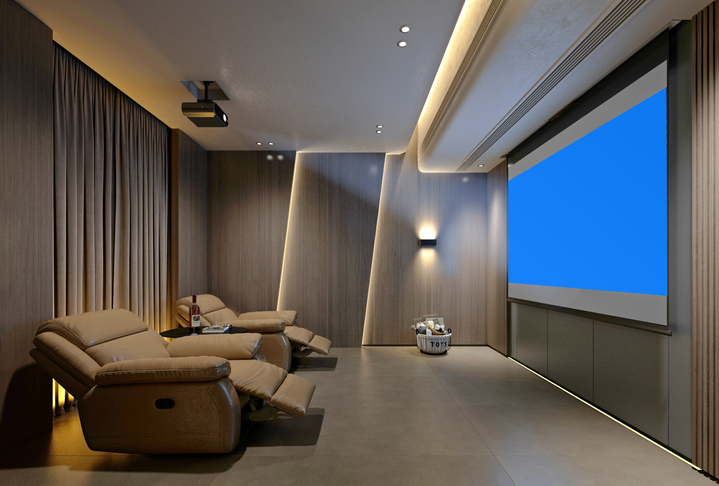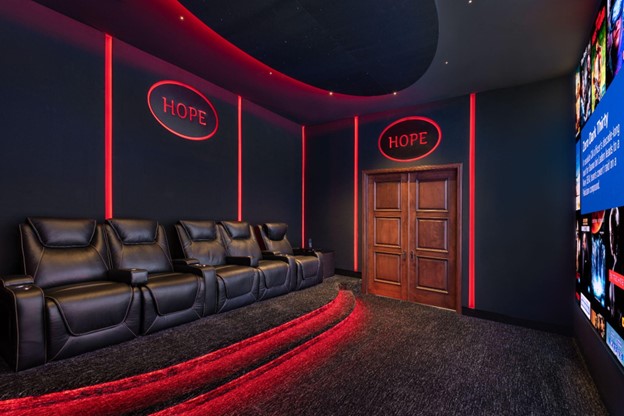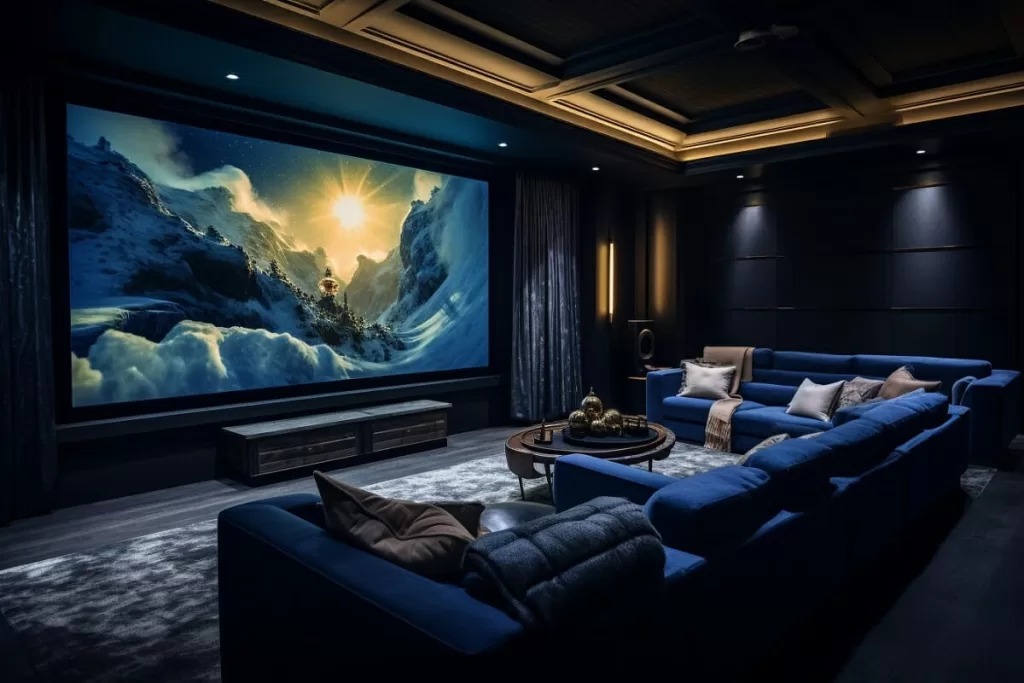Home Theater 101: Every Little Thing You Need to Know for a Motion Picture Experience at Home
Developing a home theater that equals the motion picture experience of a commercial theater involves mindful factor to consider of several components, including display selection, stereo, and room layout. Each component plays an essential duty in attaining the desired atmosphere and performance. Whether you are contemplating the optimal display dimension or the ins and outs of border sound, understanding these principles is essential. As we discover these essential parts, it becomes apparent that the options made can dramatically affect your overall watching experience, leaving one to ponder how these decisions will shape your individual movie theater.
Picking the Right Screen
When establishing a home movie theater, choosing the appropriate display can make or break the checking out experience - home theater installation tampa. The display works as the focal point of your setup, affecting picture high quality, watching angles, and total aesthetic. Secret aspects to take into consideration include display resolution, size, and type
Initially, identify the appropriate screen size based on your area measurements and seating distance. A basic guideline is to sit roughly 1.5 to 2.5 times the diagonal display size for optimal watching. Next off, pick between numerous display types, such as fixed-frame, mechanized, or retractable displays, each offering distinctive benefits. Fixed-frame displays normally supply the most effective image top quality, while motorized options permit versatility precede usage.
Resolution is one more crucial variable. For a really immersive experience, take into consideration a display designed for 4K or perhaps 8K material, making sure sharpness and quality. In addition, take into consideration the display's gain, which impacts brightness and comparison; a greater gain can boost brightness in well-lit spaces, while a reduced gain might be preferable for darker settings.
Choosing Sound Equipment
Audio equipment is an essential component of any kind of home theater system, substantially enhancing the overall viewing experience. The selection of audio equipment can determine the deepness, clarity, and immersion of noise, crucial for developing a motion picture environment.
When selecting audio tools, think about a border stereo, which generally includes a receiver, numerous speakers, and a speaker. A 5.1 or 7.1 network system is suggested, where the first number represents the audio speakers and the second the subwoofer, offering an immersive soundscape. The receiver is the heart of the system, handling audio and video clip signals, and need to support modern-day layouts like Dolby Atmos for an enhanced spatial experience.
Quality audio speakers are crucial; search for designs that offer a well balanced sound account with excellent bass action. Floor-standing speakers can generate richer sound, while bookshelf options conserve area. Furthermore, consider wireless choices for simplicity of installment, although wired systems typically supply remarkable efficiency.

Ideal Seating Arrangements
Developing a suitable home theater experience pivots dramatically on optimum seating arrangements. The plan of seats plays a crucial duty in both convenience and watching high quality, directly influencing the general motion picture experience.
First, take into consideration the screen size and viewing distance. A typical standard is to place seats at a distance roughly 1.5 to 2.5 times the angled dimension of the display. This guarantees an immersive experience without stressing the eyes.
Next, elevation is critical. If your seats remains in a tiered format, the back rows ought to be greater than the front to avoid blockages. For flat seats, make certain that the front row is not also close to the display, which every person has a clear line of sight.
Additionally, think about the setup in terms of social characteristics. Team seats can boost the common experience, while individual seats might be preferred for personal viewing.

Lastly, prioritize comfort with ergonomic seating that sustains extended watching periods. Incorporating reclining chairs or supported seats can considerably boost the experience, making the home theater a preferred location for both entertainment and relaxation.
Lighting and Atmosphere
Efficient lighting and setting are necessary components of a properly designed home cinema, as they dramatically influence the seeing experience. The right lights can enhance the cinematic feel, while poor selections can diminish it. For optimal outcomes, take into consideration a layered lighting approach that consists of ambient, job, and accent lights.
Ambient lighting offers general lighting, making certain that the room is not totally dark, which can strain the eyes. Dimmer buttons are extremely suggested, enabling changes based on the content being seen. Task illumination, such as wall surface sconces or flooring lamps, provides practical lighting for tasks like analysis or browsing the room without interrupting the general atmosphere.
Accent lighting can be utilized to highlight architectural features or create focal points, adding depth and passion to the space. LED strip lights behind displays or along racks can offer a subtle radiance that enhances the visual experience without frustrating the customer.

Wiring and Installation Tips
A well-planned circuitry configuration is crucial for achieving ideal efficiency in your house theater system. Proper circuitry not just guarantees top quality audio and video clip signals yet likewise improves the general visual of her latest blog your space. Begin by mapping out your layout, identifying where each element will be put, including your screen, speakers, and receiver.
When picking cables, focus on top notch, appropriately determined wiring to reduce signal loss. HDMI cords dig this need to be used for video connections, while speaker cord ought to match the requirements of your speakers and amplifier. Choose for in-wall rated wires to adhere to safety and security requirements and preserve a clean appearance.

Verdict
In summary, creating an extraordinary home cinema experience requires cautious factor to consider of different aspects, consisting of display selection, audio equipment, seating plans, illumination, and wiring. By focusing on these factors, a motion picture atmosphere can be efficiently reproduced, permitting for immersive seeing experiences that match traditional theater setups.
Developing a home theater that measures up to the cinematic experience of an click for source industrial theatre includes careful factor to consider of numerous components, including display selection, sound systems, and space format.When setting up a home cinema, picking the right display can make or break the checking out experience. Next, choose in between different screen kinds, such as fixed-frame, motorized, or retractable displays, each offering distinct advantages. For a truly immersive experience, consider a display created for 4K or also 8K web content, making sure sharpness and clarity.In summary, creating an extraordinary home theater experience calls for careful consideration of various elements, including display choice, audio devices, seating arrangements, lights, and wiring.